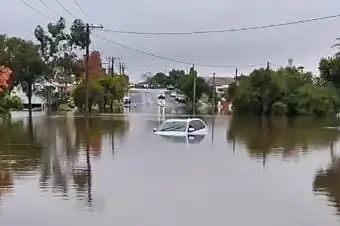At least 14 people have been confirmed dead and 12 others are missing following devastating floods and landslides triggered by several days of torrential rainfall across South Korea. The country’s disaster management office fears the death toll may rise as emergency rescue operations continue.
The southern and central regions have borne the brunt of the destruction, with nearly 10,000 residents forced to evacuate and over 41,000 households temporarily losing electricity. Approximately 3,800 people remain displaced due to damage to their homes.
One of the hardest-hit areas is the resort town of Gapyeong, where heavy rainfall caused a deadly landslide on Sunday, killing two and leaving four others missing. Emergency services rescued 63 individuals, while 285 people were evacuated from the area, according to the Gyeonggi Province Fire Department. Further south in Sancheong, six deaths and seven missing persons have been reported. Video footage from Chungcheon region showed entire villages blanketed in mud and debris.
Thousands of roads, homes, and buildings have been submerged or damaged. Farmlands have been inundated, with widespread livestock deaths reported, deepening the impact on rural communities.
President Lee Jae-myung has ordered the designation of the worst-hit areas as special disaster zones to expedite relief and recovery efforts. On Sunday, the government launched a multi-agency response involving emergency services, the military, and local authorities. Interior Minister Yun Ho-jung called on officials to mobilize all available resources swiftly to support affected communities.
While the rain has subsided in the south and central areas, the Korean Meteorological Administration warned of continued rainfall in northern regions, including Seoul. Serious landslide warnings remain in place across several provinces.
The rainfall is expected to end by late Sunday, but authorities are preparing for a potential heatwave to follow, posing further risks to rescue workers and displaced families.
The unfolding disaster underscores South Korea’s vulnerability to extreme weather events and the urgency of enhancing disaster preparedness in the face of climate change.

